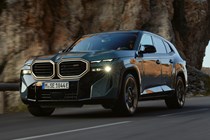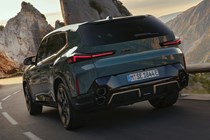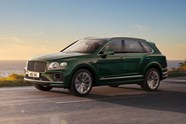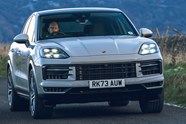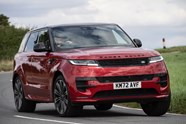
BMW XM review
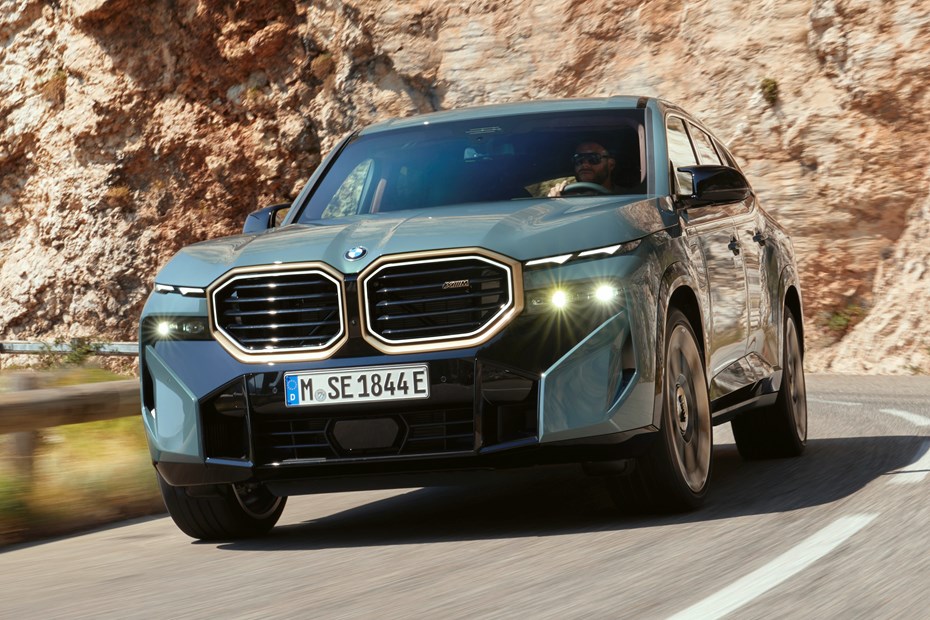
At a glance
| Price new | £110,840 - £174,440 |
|---|---|
| Used prices | £57,436 - £106,150 |
| Road tax cost | £620 |
| Insurance group | 50 |
Get an insurance quote with

|
|
| Fuel economy | 21.9 - 25.2 mpg |
| Miles per pound | 3.2 - 3.7 |
| Number of doors | 5 |
| View full specs for a specific version | |
Available fuel types
Hybrid
Pros & cons
- Attention-grabbing styling, inside and out
- All-electric range of up to 55 miles
- Lots of advanced standard-fit technology
- Large footprint and hefty kerb weight
- Not as quick as you might hope given its price
- Doesn’t have the M car verve that it should
Overview
The BMW XM is a powerful hybrid SUV that acts as the new flagship for the brand’s high-performance arm. It’s also the first bespoke BMW M division car since the fabled M1 of 1978, and the first to utilise hybrid technology.
You might have hoped that a new dedicated M car would take the form of a remarkable super-saloon or coupe but, today’s market and demands being what they are, we get our first real glimpse at the future of M with a 2.8-tonne plug-in hybrid SUV.
It is one with appropriate on-paper specifications for an M car, though; the XM packs a powerful V8 and an electric motor, churning out a total of 653hp, and it’s laden with impressive technology, including active anti-roll bars and a battery that allows it to reputedly travel up to 55 miles on electric power alone.
And then there are its dramatic looks, inside and out, which certainly make it stand out among the likes of the Porsche Cayenne, Range Rover Sport and Audi RS Q8. But while the distinctive BMW is quick in a straight line, and comes with plenty of equipment, it just isn’t as rewarding to drive as many of its more conventional competitors. Consequently, unless you’re sold on its futuristic looks and electric capabilities, you’ll probably find rival offerings more compelling.
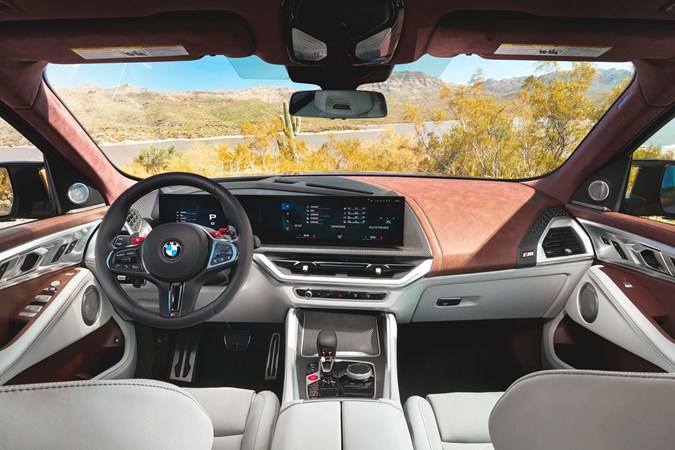
What’s it like inside?
Pretty striking, to say the least, with plenty of chrome, carbon fibre and leather. And then there are features such as its illuminated headliner and intricate ambient lighting, which all conspire to serve up a suitably premium and advanced ambience.
What’ll also catch your eye is the large, curved display area that dominates a big chunk of the dash; it consists of a 12.3-inch instrument panel for the driver, while the infotainment system is managed through a 14.9-inch panel. Disappointingly, though, physical heating and ventilation controls are gone, eschewed in favour of fiddly menus. That’ll annoy some, but the voice control, iDrive and intuitive touchscreen functions will allow most to get at what they need without excessive distraction.
As you’d hope, given the BMW’s 5.11-metre length and 2.2-metre width – including mirrors – there’s stacks of room inside for passengers. If you want three rows and seven seats, though, you’ll have to look elsewhere. Yes, despite being longer than an XC90, this behemoth only seats five. It’s also a bit short on boot space, falling behind alternatives such as the Lamborghini Urus and Bentley Bentayga.
Comfort
BMW has a knack for producing comfortable interiors and the XM is no exception. The lavish detailing and fine material choices make it feel even more luxurious, while the sheer amount of space makes for an even more relaxing cabin.
The XM has adaptive suspension as standard, which features conventional steel springs instead of an air-sprung set-up, and you can pick from a drive mode that focuses on comfort – making the brakes, steering, powertrain and suspension work to deliver the smoothest possible experience. It tries, at least; the sheer weight of the XM and its big wheels means that it always feels a little busy.
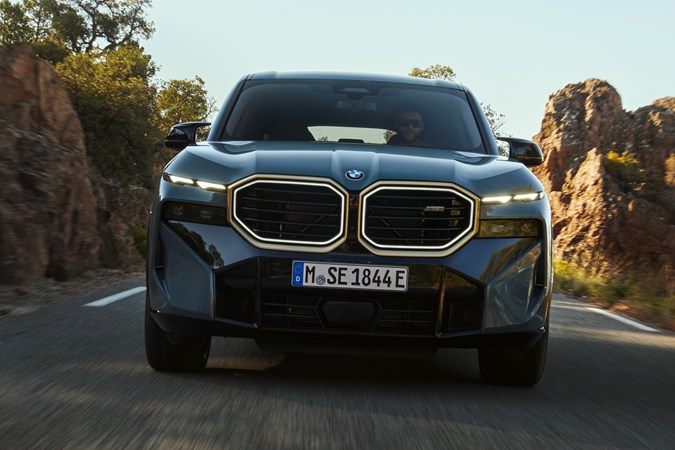
Safety
The BMW XM hasn’t been tested by Euro NCAP yet but we’d expect it to be a safe choice, as BMW has a slew of recent four- and five-star ratings to its name.
Standard assistance features include BMW’s Driving Assistant Professional, which is an adaptive cruise control and lane-keeping system, automatic high-beam dipping and a surround-view parking camera.
Customers can also opt for the BMW Advanced Car Eye 3.0 Pro option, which features high-quality front and rear cameras to automatically capture accidents or attempted break-ins.
What’s it like to drive?
It’s a bit of a mixed bag and not as good as an M car should be. The big plug-in hybrid SUV features a twin-turbocharged 4.4-litre V8 that produces 489hp, while electric propulsion comes from a 197hp electric motor integrated into the XM’s eight-speed transmission.
Combined, the two produce up to 653hp and 590lb ft of torque (pulling power), which is sent to all four wheels via BMW’s M xDrive system, while an M Sport differential further helps the back wheels put the power down effectively. Despite its weight, this all helps the XM get from 0-62mph in 4.3 seconds.
While the V8 engine is rorty, and you can’t fault the electric motor’s output, the XM’s performance never feels as impressive as its on-paper figures – and a lot of the competition is far quicker and less expensive. The steering is also not that involving, although the XM handles confidently and doesn’t roll excessively, and those seeking an engaging driving experience befitting of an M car will be left wanting.
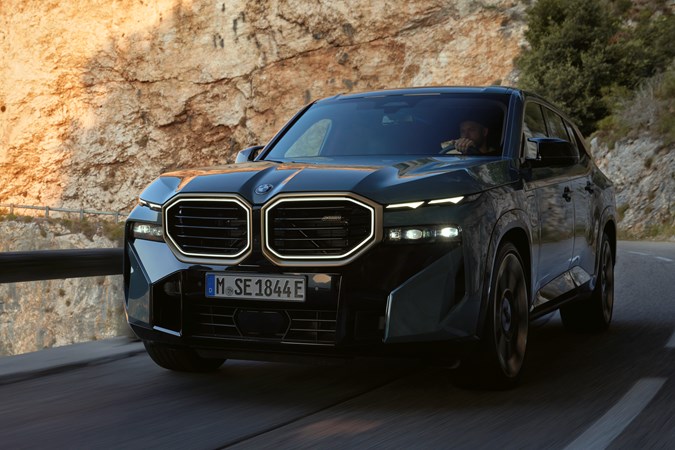
There are individual elements that impress, though, such as the advanced 4.4-litre V8’s willingness and its ability to deliver peak power from 5,400rpm right up to 7,200rpm, while the XM’s brakes serve up remarkable stopping power.
All told, conventional high-performance SUVs – such as the Porsche Cayenne and Aston Martin DBX – are more exciting and rewarding to drive than the BMW XM. Even BMW’s own X5, in M Competition specification, is more alluring and quicker. And then there’s the all-electric iX M60, which offers a compelling driving experience coupled with a greener all-electric powertrain.
Ownership costs and maintenance
BMW claims that the XM will average up to 188.3mpg and emit as little as 33g/km of CO2. That sounds impressive but unless you drive it diligently, and routinely charge its 25.7kWh drive battery to the fullest, the real figures will be significantly less impressive.
After all, once its battery is spent, you’re left with a twin-turbocharged 4.4-litre V8 that’s tasked with propelling an SUV that weighs in at 2.8 tonnes. BMW says its similarly powerful all-petrol X6 M Competition will return a claimed 22.2mpg on average, for comparison, and that weighs half a tonne less than the XM. Nevertheless, many owners will stand to benefit from the XM’s all-electric capabilities if they make the best use of them.
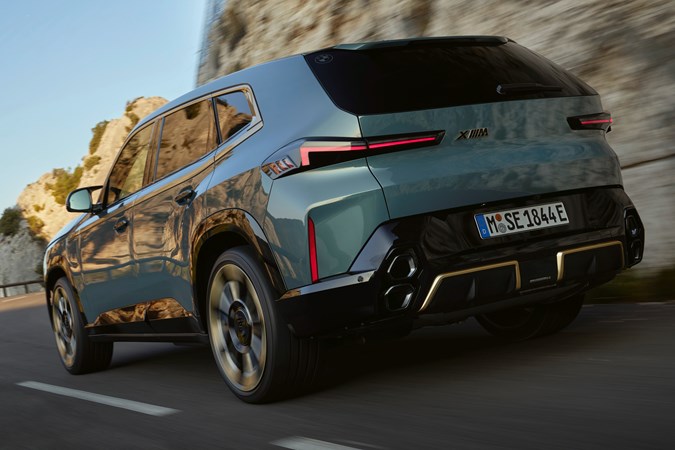
As a further upside, BMW offers a Service Inclusive package that covers all of the required servicing for your XM for up to its fifth year or 62,000 miles, whichever occurs first. It’s not cheap, but at least it’ll allow you to plan your expenditure.
An unremarkable three-year, unlimited-mileage warranty is otherwise standard for the XM, but its hybrid battery is warranted for eight years. This is a complicated car, in any case, and BMW doesn’t have a great reputation for reliability, so we’d recommend investing in an extended warranty if you’re set on keeping the car.
What models and trims are available?
Currently, only one version of the BMW XM is offered, which is the petrol plug-in hybrid model in standard trim. You can pick from seven exterior colours, four alloy wheel options – ranging from 21 inches up to 23 inches in diameter – and four upholstery options. The only interior trim option is carbon fibre.
BMW will also sell you an M Driver’s Package which raises the top speed of the XM from 155mph to 168mph. Of more use to most will be the Comfort package, which adds front massage seats, front and rear heated seats, ventilated front seats, heated armrests, a heated steering wheel and a heated centre console.
Standard equipment is extensive in any case, with features including a Harman/Kardon surround-sound system, adaptive suspension, soft-close doors and gesture control.
A BMW XM Label Red version is due to be introduced at the end of 2023, which will feature a contrasting red and black colour scheme and 750hp, just in case the standard 653hp isn’t enough.
Click through to our verdict page to see if we’d recommend the BMW XM over rivals.



